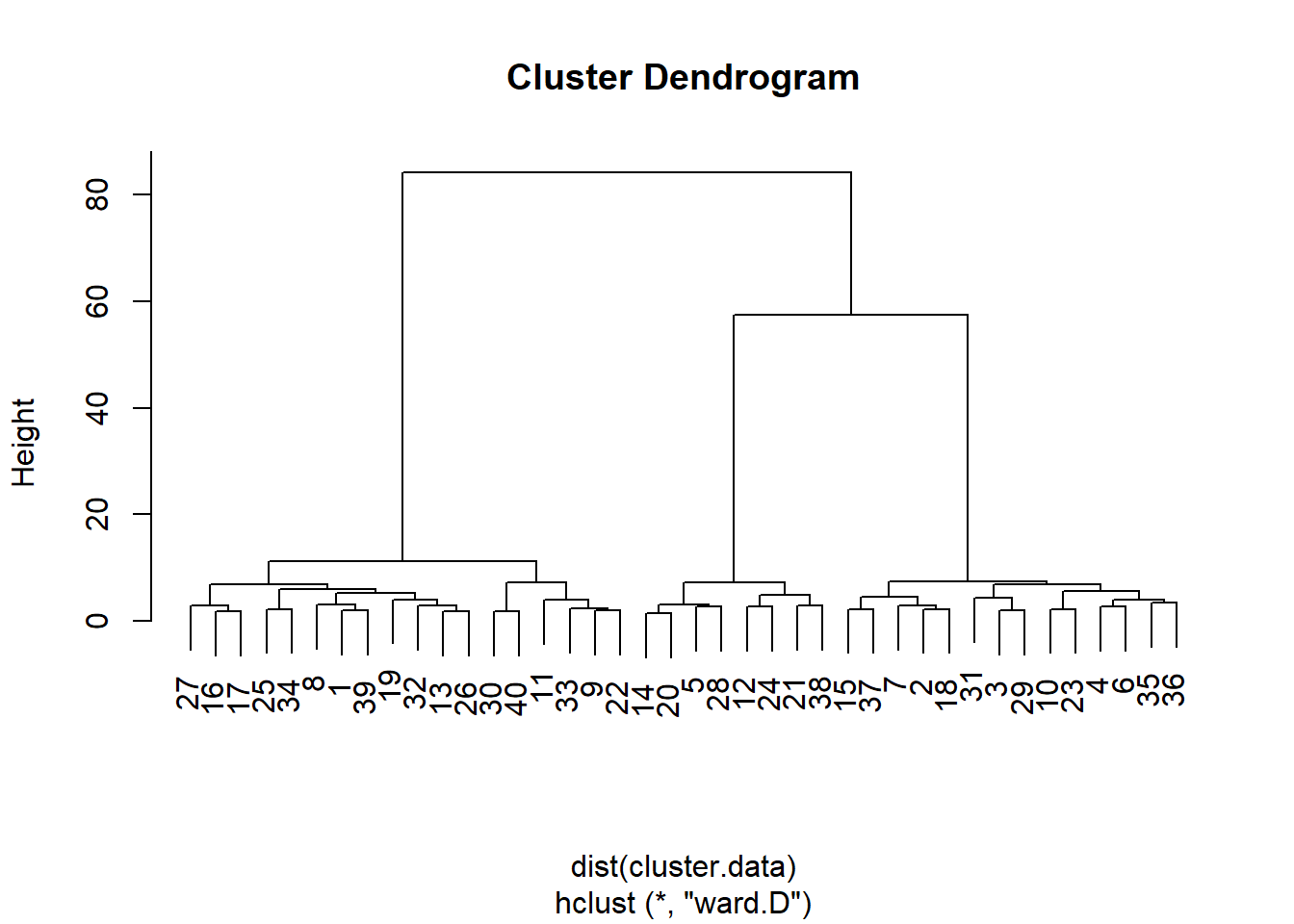7.3 Hierarchical clustering
Then, we create a new data set that only includes the input variables, i.e., the ratings:
cluster.data <- equipment %>%
select(variety_of_choice, electronics, furniture, quality_of_service, low_prices, return_policy) # Select from the equipment dataset only the variables with the standardized ratingsWe can now proceed with hierarchical clustering to determine the optimal number of clusters:
# The dist() function creates a dissimilarity matrix of our dataset and should be the first argument to the hclust() function.
# In the method argument, you can specify the method to use for clustering.
hierarchical.clustering <- hclust(dist(cluster.data), method = "ward.D") The cluster analysis is stored in the hierarchical.clustering object and can easily be visualized by a dendogram:

From this dendogram, it seems that that we can split the observations in either two, three, or six groups of observations. Let’s carry out a formal test, the Duda-Hart stopping rule, to see how many clusters we should retain. For this, we need to (install and) load the NbClust package:
The Duda-Hart stopping rule table can be obtained as follows:
duda <- NbClust(cluster.data, distance = "euclidean", method = "ward.D2", max.nc = 9, index = "duda")
pseudot2 <- NbClust(cluster.data, distance = "euclidean", method = "ward.D2", max.nc = 9, index = "pseudot2")
duda$All.index## 2 3 4 5 6 7 8 9
## 0.2997 0.7389 0.7540 0.5820 0.4229 0.7534 0.5899 0.7036## 2 3 4 5 6 7 8 9
## 46.7352 5.6545 3.9145 4.3091 5.4591 3.2728 3.4757 2.9490The conventional wisdom for deciding the number of groups based on the Duda-Hart stopping rule is to find one of the largest Duda values that corresponds to a low pseudo-T2 value. However, you can also request the optimal number of clusters as suggested by the stopping rule:
## Number_clusters Value_Index
## 3.0000 0.7389In this case, the optimal number is three.